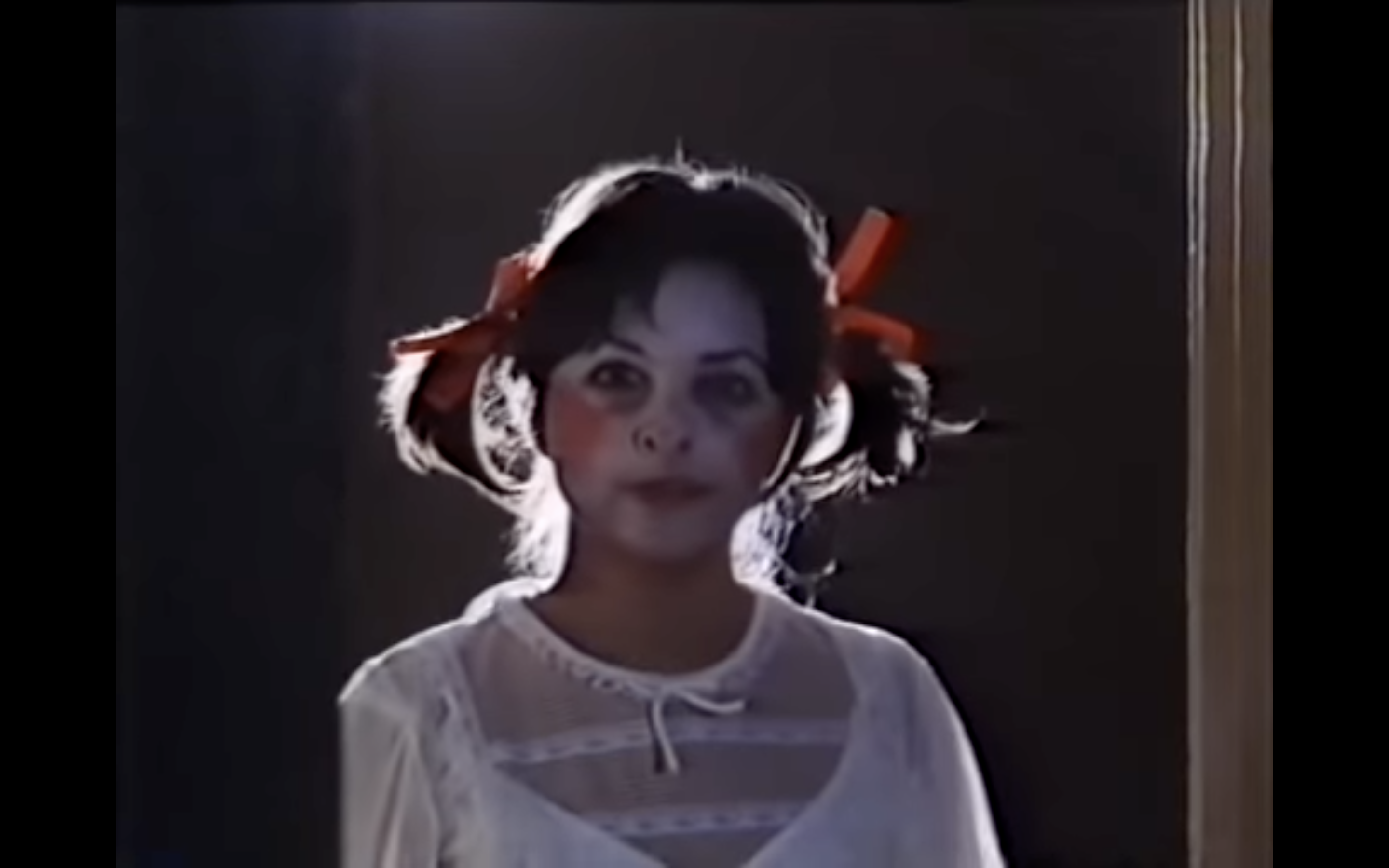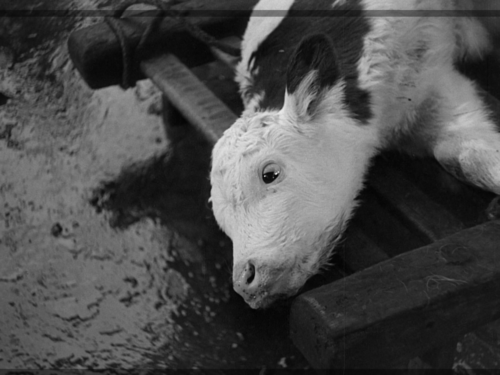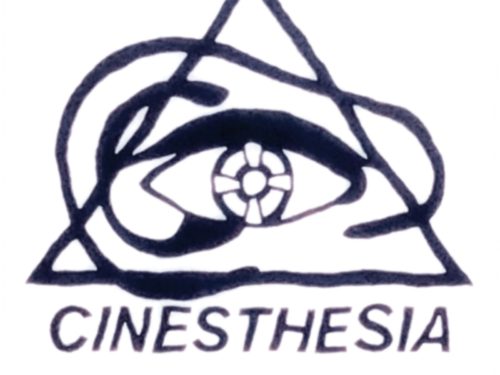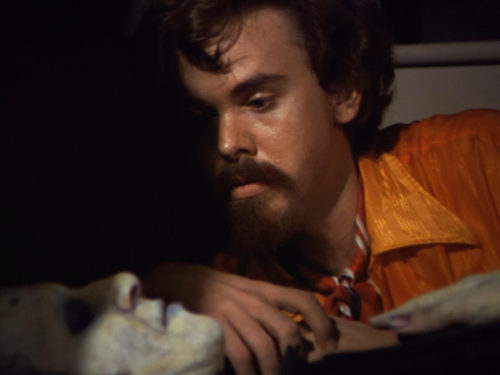Shadows of the Mind is a deeply compromised film, but it offers a glimpse into what the Last House on Dead End Street director could’ve done had he continued in the horror genre
With his first feature, Roger Watkins made one of America’s greatest horror films: The Last House on Dead End Street (1977). The film is about Terry Hawkins (Watkins, acting under the alias Steven Morrison), a criminal fresh from a stint in prison, who decides to take revenge on the world by making snuff films. He assembles a cohort of fellow degenerates and sets about making a movie of a real, ritualistic killing that he sells to a sleazy adult film producer. The film then culminates with the production of Terry’s magnum opus, starring the pornographer and his associates as the victims.
Last House is often described in near-mythical terms — as if it just appeared out of nowhere in all its brutal glory, the mind of a mad man exploded onto the screen. For years, many believed it was a real snuff film, mostly because the cast’s and crew’s pseudonyms were unidentifiable, but also for the unflinching brutality of its presentation. All of this, of course, only added to its grimy mystique. In reality, the film took a lot of work and suffered greatly at the hands of the commercial film industry. Originally titled The Cuckoo Clocks of Hell, the film was made on New York’s SUNY-Oneonta campus where Watkins went to school. He studied English literature but had made a few short films. He was considered the school’s hot-shot filmmaker and had working relationships with legendary directors such as Nicholas Ray and Otto Preminger. Casting fellow classmates and a few professors from his school, Watkins led a skeleton crew through the Cuckoo Clocks shoot while hopped-up on amphetamines1 and grand ambitions. Watkins aspired to be an art filmmaker rather than a director of genre films. He took inspiration from Fellini and Bergman and it shows through his debut film’s heavy stylization and often disorientingly self-reflexive narrative. No matter how much he may have shrugged off certain aspects of the released version of his film later in life, it is undeniable that Last House is more than your standard grindhouse horror flick.
Read more about Last House on Dead End Street (1977)

While Watkins wrote, directed, starred in, edited, and arranged the soundtrack of the film, Cuckoo Clocks of Hell was taken away from him when production wrapped. It was released in a truncated form, first as The Funhouse, and finally under its current title, to cash in on the success of Wes Craven’s The Last House on the Left (1972). Watkins was credited under his alias, Victor Janos, and said he was unaware of the film’s release until 1979. Following his horrible experience making commercial — or, at least, “commercial” for Watkins — narrative films, he made the move into the adult film world, producing some incredibly bleak and stylistically bizarre pornos. Watkins didn’t even step forward as the director of Last House, a film which had become a genuine cult classic in the years since its release, until the turn of the millennium.
But there’s another horror film — one that was, yet again, wiped from Watkins’ résumé for decades. Although, unlike Last House, this is one he admitted to wishing he had left unclaimed. The film is Shadows of the Mind. It was released in 1980 and quickly forgotten. As with his debut, Shadows of the Mind is a notoriously compromised work. In fact, Watkins was making this film while his debut feature was in the process of being swindled away from him. The opportunity to make another film came about during distribution talks for Last House. According to an interview with Watkins included in Barrel Entertainment’s out-of-print DVD release of Last House, the filmmaker was introduced to a producer named Leo Fenton at a friend’s photography studio. Fenton told him he knew somebody who could help put Last House into theaters. He also mentioned that his wife, Marion Joyce, was an aspiring film actress. They decided to produce a script that Watkins co-wrote with Paul Jensen, a film historian and one of Watkins’ professors.2
The script was called A Heritage of Blood and follows a woman named Elise (Joyce) as she leaves a mental institution. When she was a child, she witnessed the drowning deaths of her father and stepmother. The memory haunts her to this day. When Elise returns to her family’s estate she’s forced to face painful memories and is put back into contact with her conniving brother, Leland (G.E. Barrymore). Things turn for the absolute worst when her psychiatrist, Dr. Lang (Erik Rolfe) — whom she is deeply infatuated with — and his cruel fiancée, Diana (Bianca Sloane), drop in for an evening visit. When the weather suddenly turns, they end up having to spend the night. As Elise grows jealous of Diana’s relationship with Dr. Lang, the film makes connections to Elise’s past. We gradually come to understand that Elise had a more active role in the traumatic experience that led to her being committed while she draws parallels between her stepmother and Diana — the two women who stand between her and her two beloved father figures.
Sadly, the production of Shadows of the Mind was doomed from the start. Joyce was cast as the star of the film. Her performance as Elise speaks for itself, but Watkins was never one to withhold his opinions: “[Joyce] is just one of the biggest jokes I ever met in my life… [She] wanted to be a movie star, she wanted to be a singer, she wanted to be this, that, and the other thing, and she was none of these things. She used to do things like pay people to write sheet music for her and put her name on it so she could say ‘See, I wrote this music!’”
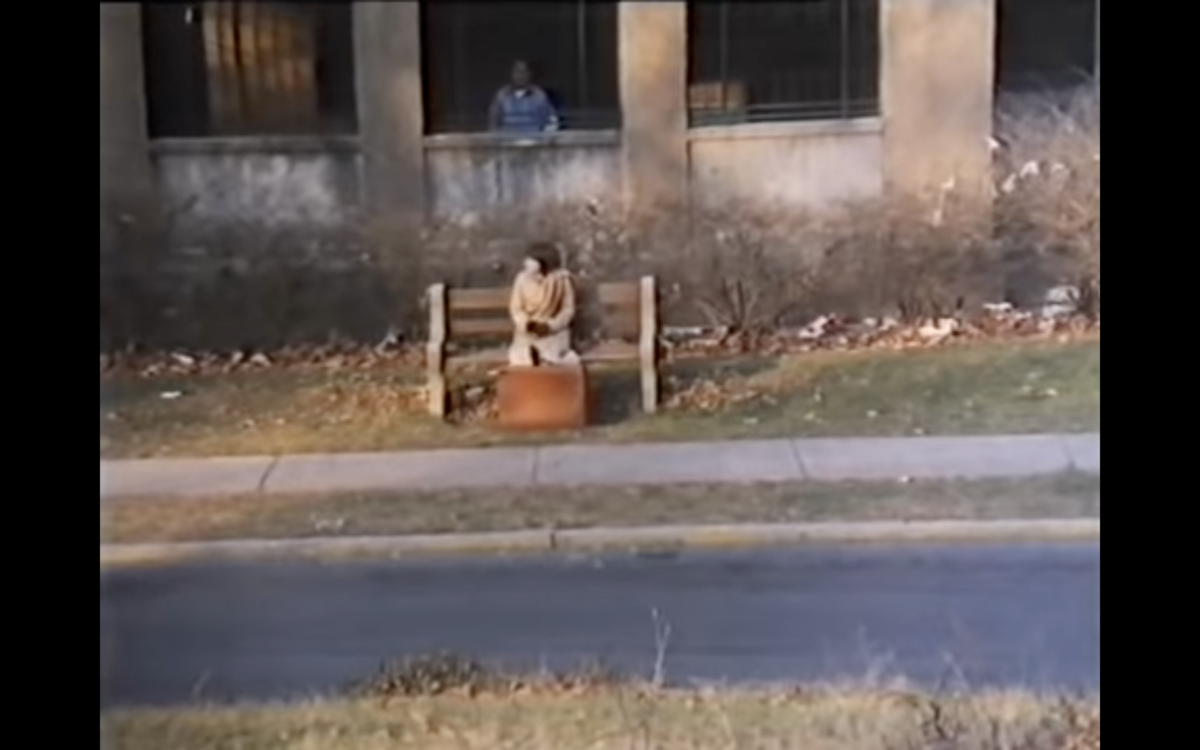
Realizing he was stuck with a painfully unskilled lead actress, Watkins knew the film was bound for failure. He eventually walked off the set, only for Fenton to lure him back to finish the film with a bigger paycheck. As things continued to go poorly and the film failed to take a desirable shape, Watkins began questioning what they were doing. He says Fenton admitted that producing the film was an attempt to save his marriage. According to Stephen Thrower’s profile of the film in Nightmare USA, Fenton reasoned that producing a movie for his wife to star in was “cheaper than a divorce.” Once the film was completed, Watkins’ directing credit was given to Bernard Travis — an associate of Fenton’s who Watkins already despised for adding an unwanted concluding voice-over to Last House. Marion Joyce also stole the writing credit for herself from Watkins and Jensen.3
For all of the major cuts, re-edits, and tacked-on voiceovers, Last House remains a remarkable achievement. Its images and its tone are so singularly horrific that not even the hack job it received once it was taken away by distributors could dilute what Watkins had created.4 Shadows of the Mind, on the other hand, barely works. It is a mess of bad performances and awkward sequencing. Many, Stephen Thrower included, struggle to recognize Watkins in the film. But for as flawed as it is, there is definitely a pulse running throughout Shadows that belongs to the man who helmed Last House on Dead End Street.
Included with the Barrel Entertainment DVD release of Last House is an interview with Watkins shot by a friend, Rick Fernandez, in 1988. The filmmaker is profiled while guiding a tour around his home and favorite spots in Nyack, New York. These places include Carson McCullers home and the graveyard where she is buried. He discusses how he used to love playing in cemeteries as a kid, which he considered being like “another universe.” Throughout the interview, Watkins shifts between sincerity and morbid, often cynical, joking when answering his friend’s questions. It’s often hard to tell where the distinguishing line is in his answers between honesty and playfully trying to stir up some shock. For instance, he expresses a great reverence for McCullers’ writing shortly before confessing an ecstatic and twisted attraction to the deceased author. At the time, he had recently split from his wife and was living alone. When asked about his mental state at the moment, he says, “I set up walls and bridges around everything… If I didn’t, I’d be in a fucking mental institution.”
Shadows of the Mind is a film concerned with when those walls and bridges start cracking and crumbling beyond repair. This was certainly something that Watkins explored throughout his career — not only in his early horror films, but also in adult films he wrote and directed like Her Name was Lisa (1979) and Corruption (1983). But despite the film’s shortcomings and the despicable supporting characters that surround Elise, Shadows of the Mind feels oddly more sympathetic to its central character than Watkins may have later claimed due to his relationship with Joyce. Without stretching into too speculative of territory regarding what the film could have been, when watching it with the knowledge of how terrible the shoot went and how guardedly sensitive and reactive Watkins appears to have been, there is something in the film that remains vital and promising. One of the most striking things viewers may notice in Shadows of the Mind is how much it resembles certain narrative aspects of Last House. Both films begin with unstable figures being released from institutions who take up residence in large, foreboding mansions. In Last House, the abandoned building Terry takes over is transformed into a horror house for his deranged productions. He creates living hellscapes for his victims to navigate before their deaths. In Shadows of the Mind, the narrative hinges on long-time trauma patient Elise returning to the home where she witnessed the deaths of her father and stepmother. She must deal with haunting memories and cruel and greedy relatives, who we are first led to believe will be the sinister figures within the film. Elise is the heir to the mansion and a large fortune; Some of the people around her want what they believe is rightfully theirs. But the film quickly flips the table on us as her own history, and the lack of help she has received in dealing with her trauma, lead her to become the violent one. Like Terry, she seeks vengeance on those she believes have done her wrong. But she is no Manson-like criminal mastermind. The violence she has inflicted in the past has left her damaged and unable to face the world. The horror she eventually creates is more defensive than anything. She is utterly unprepared to be in the environment she has been placed in.
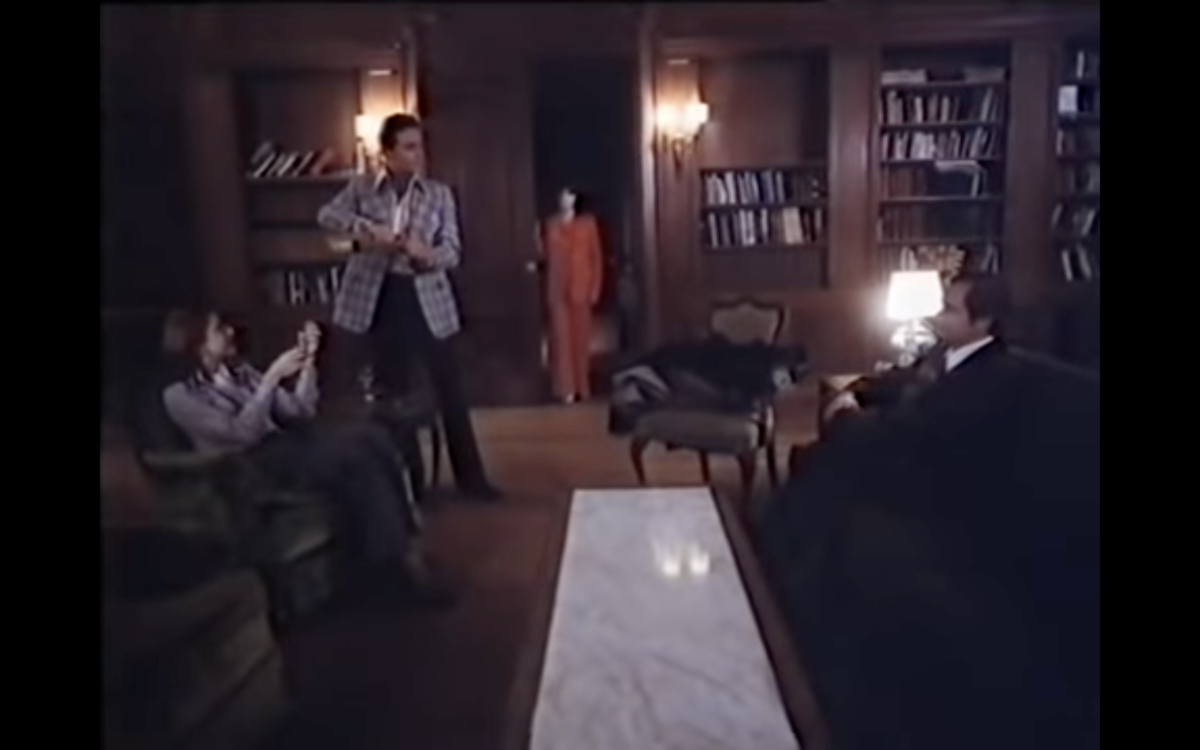
Both of Watkins’ horror films share certain stylistic tendencies. Each opens with strange voice-over narrations that build a padded-cell effect around the characters. Shadows creates an uneasy contrast between the echoey voice over and the sharpness of sounds in the world outside of Elise’s inner-monologue — particularly a rusty swing swaying in the wind — which is more effective at evoking an unease around her release from the hospital than the nervousness conveyed through Joyce’s delivery of post-recorded dialogue. As she waits to be picked up from the institution, she sits nervously on a bench while patients inside the building can be heard. One is ranting loudly about Nazism from behind barred windows. Surely, only Watkins could create such a twisted sense of comfort out of a place that emits such sounds. Upon being picked up, the sequence of Elise’s ride home finds nearly every sight, sound, and sensation triggering a memory of the traumatic relationships and events that caused her to be committed. The above-mentioned swing sends her off on a daydream about her father, only for the fleeting vision of a woman passing by in a car to shift her inappropriately infatuated reminiscences of her father into jealous rantings about her stepmother. This sequence is surprisingly effective at conveying the tragically limited scope of her worldview, as everything sends her mind reeling back to a singular event.
In Watkins’ films, characters are often driven mad by their environments. It’s worth noting that he believed the scariest film of all-time was Orson Welles’ The Trial (1962). Films like Last House, Shadows of the Mind, and Corruption have extended sequences in which the world transforms into an oppressive labyrinth of endless hallways and rooms, not unlike the nightmarish visuals of Welles’ interpretation of Kafka. As we follow Elise back home, the mansion is presented as a thoroughly disorienting space. Characters are stalked through the twisting wings and multiple floors of the mansion. Elise wanders the grounds of her home while the family’s gardener leers at her through keyholes. Visually, the shadowy compositions of interior mansion shots during the final act are even quite impressive — despite the film’s reputation for being so bland — in the rough and worn-out version currently available on YouTube.
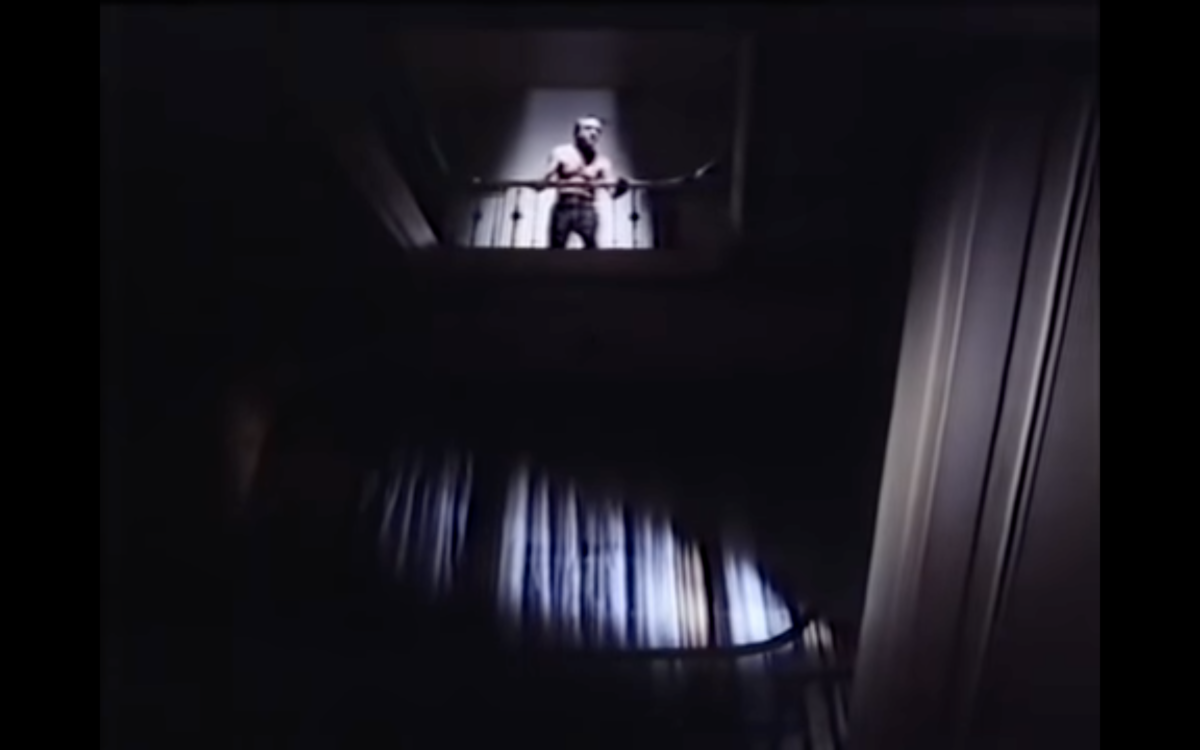
But while these elements of Watkins’ style on display in Shadows of the Mind are interesting when considered alongside his other work, they obviously don’t amount to much within the actual film. Without trying to be cruel, a great deal of what causes Shadows to fall short is its inexperienced star. Had Watkins been able to cast a more talented actress, the film may have turned out differently. But his fraught relationship with Joyce draws some strange tension of its own within the film. Watkins holds a brutal distance from his lead performer. His resentment towards Joyce comes through bright as day whenever she is on camera and she is often the only character on screen. This is especially noticeable in close-ups, which feel like Watkins is abandoning her to her own devices — “You wanna be a star, huh? Well, go for it!” — leaving her plenty of room to indulge herself while washing his hands of the mess of undisciplined emoting that ensues. Knowing of her relationship to the film’s producer and that she nabbed Watkins’ screenplay credit makes Watkins’ depiction of her performance feel somewhat similar to how Terry Hawkins shoots the death scenes of his producer (played by Steve Sweet) in Last House, who is forced to stare at himself in a mirror as his humiliating murder is immortalized on film.
While Shadows of the Mind is certainly a deeply flawed work, it is easy to recognize the potential of what it might have been had Watkins’ imagination not been met with such impossible limitations. Regardless, the film offers a fascinating, if fleeting, glimpse into Watkins’ mind, as we see elements of what he would continue to explore in his adult films. Watkins later joked that he had much better working relationships with porn producers — who he portrayed so viciously in Last House — than with the more traditional film industry types he encountered, like Fenton. In adult films, he found a place where he had to play by certain rules, but was given room to let his very particular idiosyncrasies loose on unsuspecting audiences. He was concerned with violence and how films could twist our abilities to process and understand it. In a 1973 radio interview, Watkins spoke critically of films that aestheticized the danger out of violence and bloodshed, particularly the critically acclaimed New Hollywood films like The Wild Bunch (1969) and The Godfather (1972). When speaking about Sam Peckinpah and his “ballets of violence,” Watkins felt it was dangerous to place viewers at such a distant and romanticized remove from such brutality. “If you’ve ever had your nose hit in a fight,” he said, “you know it’s totally false.”
Roger Watkins certainly never left us any room to distance ourselves from his movies. And in his two early horror films, we see him exploring violence erupting from characters who have been failed by institutions and unleashed on the world before they are ready to cope — with the harshness and cruelty that surrounds them, certainly, but perhaps most devastatingly, the violence burning in their own imaginations.
Stay up to date with all things Split Tooth Media and follow Brett on Twitter and Letterboxd
(Split Tooth may earn a commission from purchases made through affiliate links on our site.)
Find the complete October Horror 2022 series here:
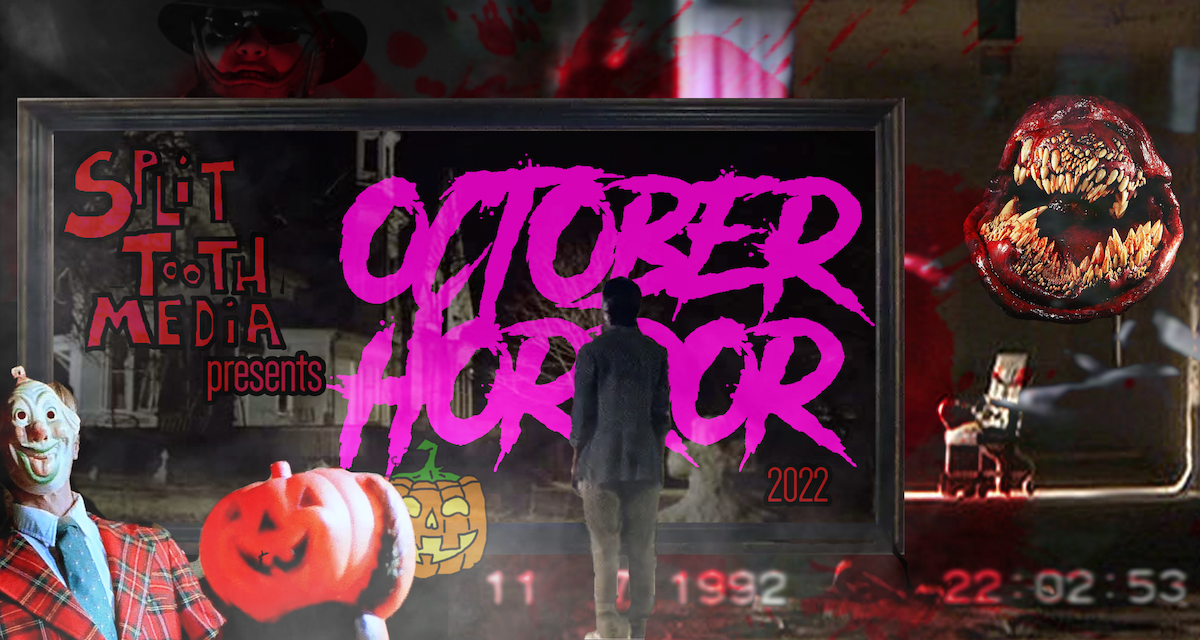
- Watkins claimed that he spent $3,000 on the production, but only $800 on the actual film: “I think that was to buy drugs… I didn’t spend anything on [Last House]. Nothing. There was not a dollar spent.”
- Jensen also plays the blind first victim of Terry Hawkins in Last House.
- Watkins later made a film, Spittoon (1981), a pitch-black film industry satire, about his experience on Shadows of the Mind. No copies of Spittoon appear to exist today.
- Watkins acknowledges that the final act of Last House involving the production of Terry’s film starring the pornographers as victims — which takes up nearly half of the released film’s runtime — plays almost exactly as he originally intended.

